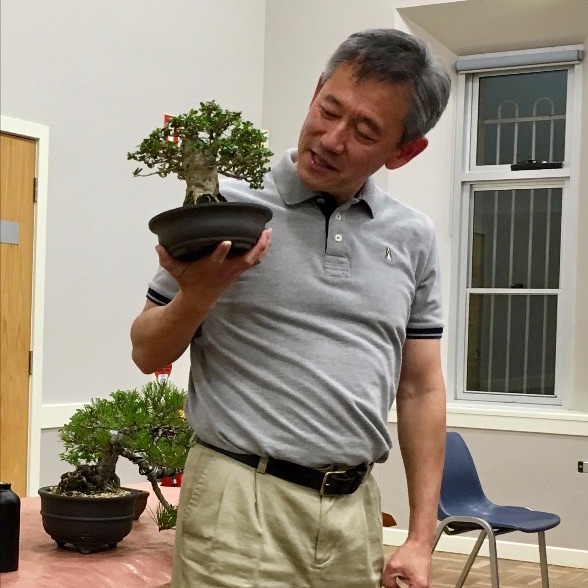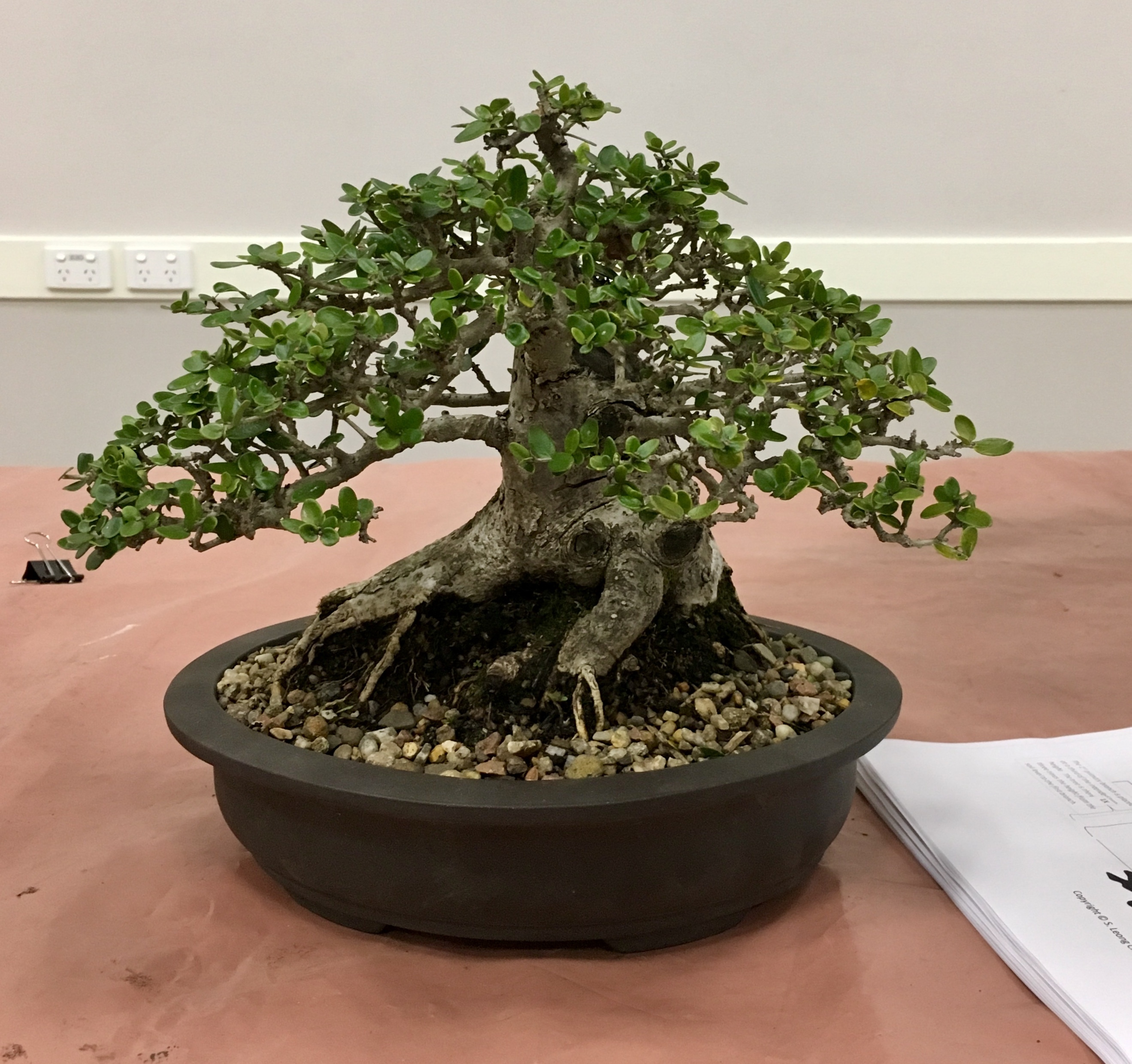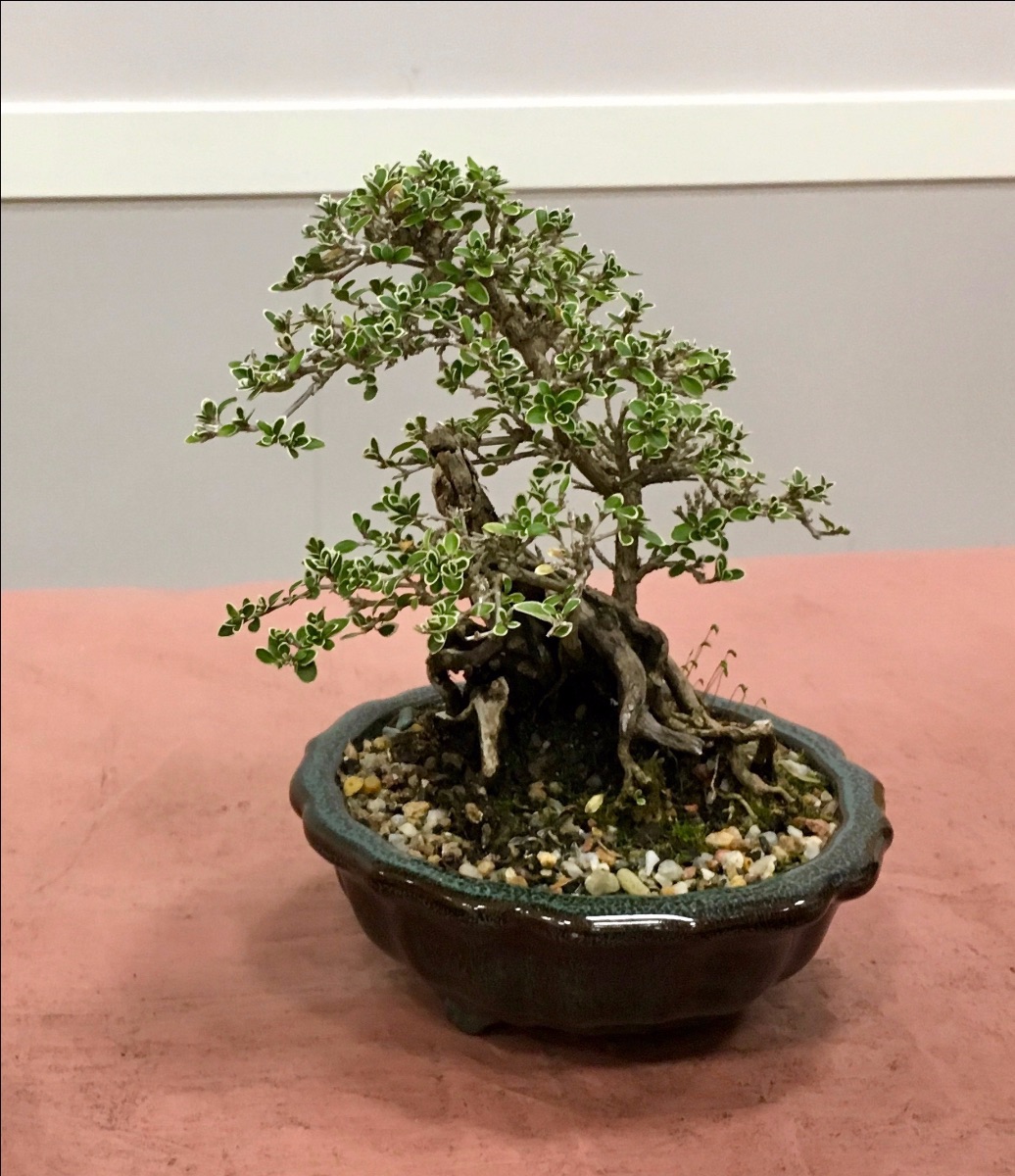
Leong discussing his ‘Seven Elements of Bonsai’ framework
Once again, Leong delivered a great talk illustrating how one can raise one’s bonsai practice from the ordinary to a more sophisticated and pleasing level. Leong very kindly provided the information quoted directly below.
‘There are many elements of a tree that can be employed to create a bonsai. In creating a particular bonsai style, the characterisation of the elements follows the rules that govern each style. These rules set the manner in which the bonsai enthusiast can mould the bonsai creation to synthesise the tree in accordance to the style as it would be in its natural growing environment.
The aesthetic appeal of the bonsai tree or setting cannot be fully expressed until some or all of these characteristics are artfully combined and presented in the final composition. To create a bonsai that stands apart, inventiveness in the application of the rules in a stylised manner can result in an artistic expression of nature.
The characteristics of common elements inherently define every tree in nature. In order to incorporate these characteristics into the format of a bonsai image, it is necessary to portray them in exaggerated miniature forms. Each style of bonsai has its unique characteristics that are imparted by the way their elements are presented.
All bonsai compositions aim to present some of the best aspects of the elements that make up the bonsai in an overall aesthetic manner. Some design elements are more pronounced and define the uniqueness of the tree. The root spread of tree known as the ‘nebari’, the movement and tapering of the tree trunk, branching positions on the tree, the foliage pads and the shape of the tree are elements that make up a bonsai composition.
The manner in which these characteristics are presented is important as these characteristics can portray the maturity and perceived age (as opposed to the actual age of the stock tree) as well as the strength or fragility of the bonsai.
Old age is portrayed by characteristics such as decay, damage by the environment, twisting trunks and branches, deadwood and flaky bark that are generally a result of a tree in nature being in existence for a long time whereas young age is suggested by the lack of these characteristics.

Strength is generally portrayed by a wide and chunky nebari and a trunk with branches spreading widely with lush foliage. Fragility can be suggested by an unstable nebari and a slim trunk with sparse branching and foliage.
When designing a bonsai composition, consideration should also be given to the tree’s species (or cultivar) and its growth characteristics, the existing form and structure of the ‘stock’ tree, the desired bonsai style for the tree and how it can be trained and presented to highlight both its natural and aesthetic features.

The aesthetic expression of these characteristics needs to be incorporated holistically in any bonsai design. The aim is to extend the design by combining the characteristics of the individual elements to create a bonsai tree or setting that has improved visual harmony and aesthetic appeal. By incorporating the characteristic of each of the design elements within a unifying design theme, in an artistic manner, the bonsai enthusiast can create a bonsai image that is more aesthetically balanced and interesting to engage the viewer.’
Copyright S. Leong Chong July 2019
